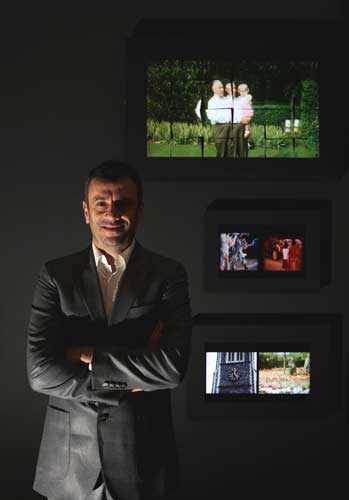Observations: Britishness plays it for reel

Kutlug Ataman is Turkey's foremost contemporary artist, but for his latest exhibition at Thomas Dane Gallery in London, he's turned his eye on the subject of Britishness.
The Turner Prize-nominated artist is showing a new work, fff, which consists of 10 video installations based on genuine cine-reel footage of two English families from the 1950s and 1960s, accompanied by a score composed by Michael Nyman. All the film reels with individual scores are played simultaneously in the same space to create an operatic cacophony of sounds and sights. Four of the films will be shown on Channel 4 from Monday to Thursday next week in its 3 Minute Wonder slot.
An abbreviation for "found family footage", fff consists of images borrowed by Ataman from the archives of two British families, the Fryers and the Howards, whose fathers were both pioneering researchers into the effects of G-forces on pilots. The viewer sees clips of family life – someone brushing her hair, a child kicking a football, another licking an ice-cream cone.
The work plays with ideas of English nostalgia from the perspective of an immigrant. Ataman's preoccupation with Englishness may have stemmed partly from his British partner, Martin Fryer, whose family became part of the artwork. The Istanbul-born artist gained British citizenship in 2002 and now lives in east London.
"It was sheer chance that I watched the family footage that Martin brought home," he says. "It sparked the idea in my mind and I started developing a narrative around people coming in from different cultures and rebuilding their lives and their identities. I wanted to use footage I had found rather than created, as it was a metaphor for coming into a new, host culture and repositioning myself in it by editing these images."
He has, in the past, explored his Turkish heritage through his artwork, most dramatically in his submission to the Istanbul Biennial. That was a film featuring his Armenian nanny, who suffered from Alzheimer's, so was unable to carry out her desired task of talking about her personal history. It was, says the artist, an indirect comment on the collective amnesia towards Armenian history in Turkish society.
For now, his Turkishness is an aspect of his identity that he has exhausted. "It's not so Turkish-specific any more. I have dealt with it as much as I can. I'm more excited to be in Britain and to be part of a more global culture."
To 18 April ( www.thomasdane.com)
Join our commenting forum
Join thought-provoking conversations, follow other Independent readers and see their replies
Comments